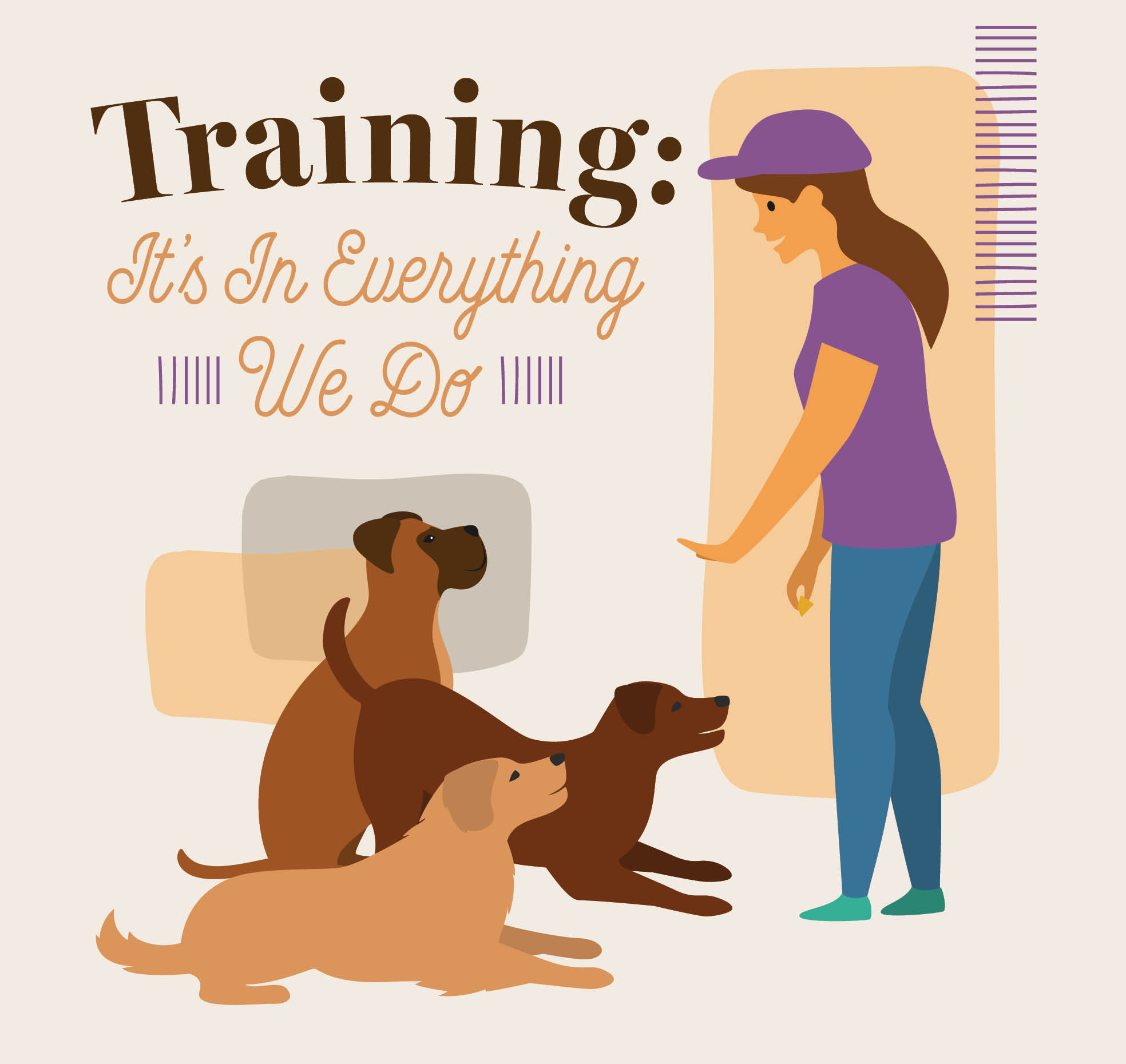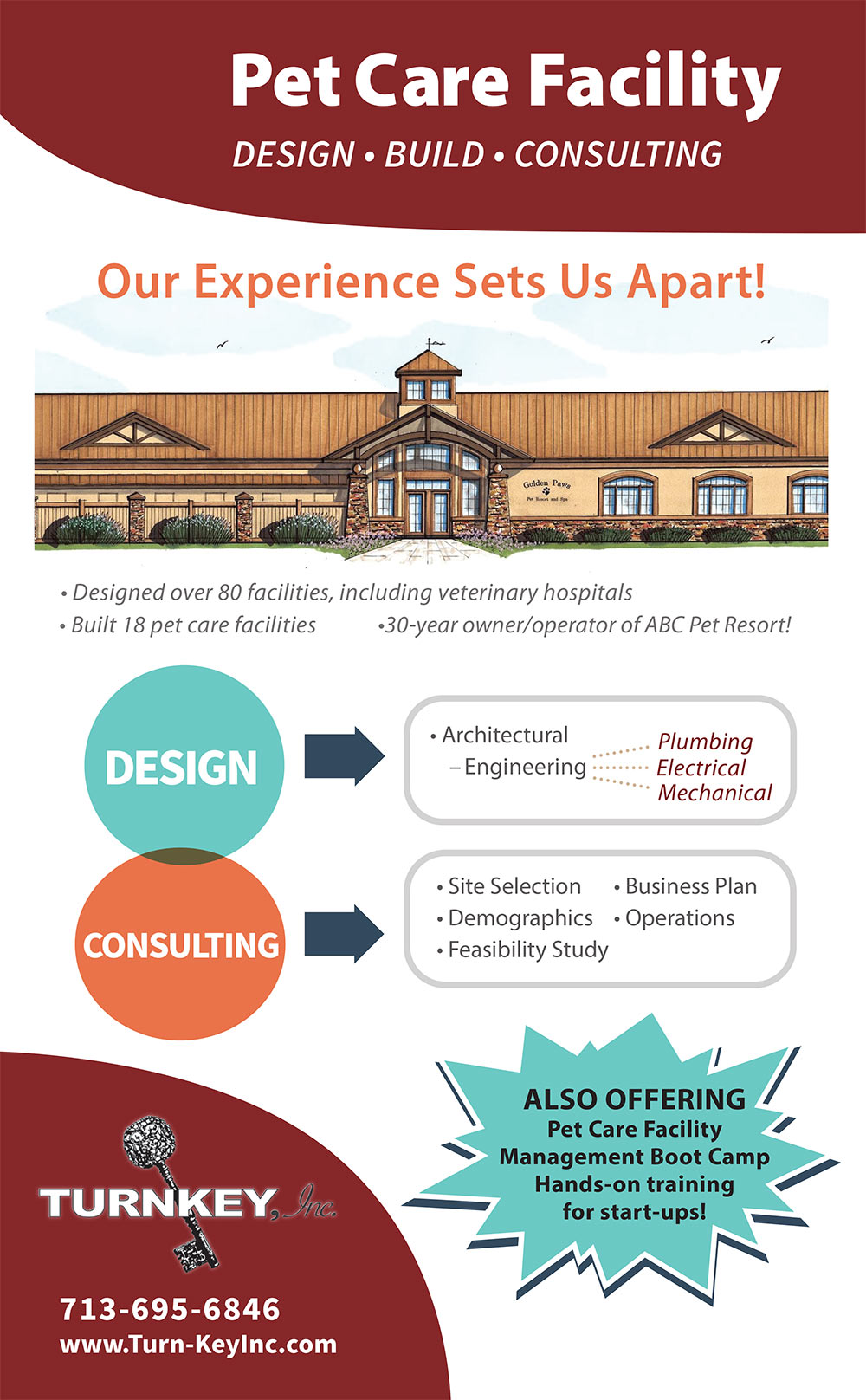
 n a dog daycare, we’re always working on training dogs. This training involves either encouraging good behavior or stopping unwanted behavior, like jumping or bolting out the gate. We’re all acting as dog trainers—some of us are just freelancing as dog handlers.
n a dog daycare, we’re always working on training dogs. This training involves either encouraging good behavior or stopping unwanted behavior, like jumping or bolting out the gate. We’re all acting as dog trainers—some of us are just freelancing as dog handlers.
One key thing to a successful dynamic in a dog daycare is consistent verbiage among the staff. This means that everyone uses the same words and commands. In addition to keeping it simple for your team members, it also helps the dogs understand what’s expected of them within your daycare environment—even if they only come to the daycare occasionally.
If one person uses “off,” another person uses “down,” another uses “no” and another uses “ahn-ahn,” eventually the dog will probably figure out what everyone means, but that takes too long. And in the process, your team members have likely gotten a bruise or a scratch from the dog jumping up on them. Instead, if we’re consistent with our verbiage, the dog learns much faster.
It may help to think of your dog training vocabulary like learning a foreign language—is it easy to learn that “no,” “stop,” “off” and “down” all mean the same thing? Or are you better off to have all your team members use “ahn-ahn” to tell the dog that means they need to stop what they’re doing regardless of the behavior? The more consistent that you and your team can be, the easier it is for the dogs to understand what you’re saying and create that memory loop.

When we’re trying to stop a behavior like jumping or play-biting, we can use treats, body language or our tone of voice. The way we speak to the dogs matters. Whether it’s a high-pitched, cheerful “Hi, Fluffy!” or a low-pitched, stern “ahn-ahn,” dogs pick up on our tone and that helps them understand what we want.

We aren’t just simply taking care of dogs—we’re helping to mold their future lives. Always consider how the dog feels about their behavior. Doing so will make sure dogs are happy and feel safe in our dog daycare.
Eve Molzhon is the creator and owner of Dog Handler Academy. Dog Handler Academy is a 100% online, automated employee training program designed specifically for dog daycares and boarding facilities. Our real-life daycare videos and online quizzes fast-track your new hires into understanding dog handling and care, saving you time and money. Courses cover basic and advanced dog handler skills, social cues and safety, client relations, and more. The mission of Dog Handler Academy is to provide employers training new hires with comprehensive material in a cost-efficient, consistent, and effective program. Our end goal is to create better handlers within our industry to ensure the proper care of animals.

